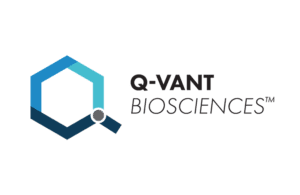 Demand is heating up for Quillaja saponin-based adjuvants, which owe their existence to the soap bark tree (Quillaja saponaria) found primarily in Chile.
Demand is heating up for Quillaja saponin-based adjuvants, which owe their existence to the soap bark tree (Quillaja saponaria) found primarily in Chile.
In particular, the QS-21 saponin adjuvant is popular. It is found in GSK’s (NYSE:GSK) Shingrix shingles vaccine, GSK’s Mosquirix malaria vaccine and Novavax’s (NSDQ:NVAX) COVID-19 vaccine. QS-21 is uniquely capable of enhancing the immune response to vaccine antigens.
Clinicaltrials.gov lists 55 studies using the adjuvant. Novavax alone aims to produce 2 billion vaccine doses annually.
Rising demand for saponin-based adjuvants threatens to exhaust supply, but the company Q-VANT Biosciences (Sagamore, Massachusetts) has emerged from stealth mode, boasting that it can increase the production volume of QS-21 by more than 1,000 times over traditional methods.

Image courtesy of Q-VANT
“We are rewriting that whole narrative,” said Q-VANT CEO Doug Klaiber.
The traditional method of harvesting raw materials is unsustainable and focuses on stripping the bark off from the Quillaja tree. The Chilean government regulates the process.
“Our technology allows us to use the entire biomass of the tree,” Klaiber explained.
The company says it uses a computational-driven approach to streamline quillaja sourcing.
“We’ve improved the efficiency in which you extract, but we also allow a much broader diverse biomass for us to obtain QS-21, which is this gold standard adjuvant,” Klaiber said.
Q-VANT isn’t the only company with its eyes on the QS-21 saponin adjuvant.
In 2019, Agenus (Lexington, Massachusetts) said it devised a new technique for QS-21 production that could potentially support billions of vaccine doses.
BotanicalSolution (Davis, California) is developing a new product it says can provide as much QS-21 as needed. The company closed $6.1 million in Series A funding earlier this year.
Traditionally, one of the biggest producers of QS-21 is Desert King International Ltd, which relies on traditional harvesting methods.
Q-VANT differentiates itself from the competition by being vertically integrated, offering both sustainable quillaja raw material supply and pharmaceutical-grade cGMP production of QS-21 and other saponin-based adjuvants.

From left to right: Q-VANT Chief Operating Officer Hans Konsens, Chief Commercial Officer Juan José Albarrán, CEO Doug Klaiber, Chief Scientific Officer Dr. Bruce Forest, VP of Regulatory Affairs Jack Love and VP of Business Development Stein Lokstad. Image courtesy of Q-VANT.
“I can’t speak for these others in terms of the timing, but we’re ready to go now,” Klaiber said. “We built the operation out to the point where we’re ready to go with millions and millions of doses of this material.”
The company says it can produce enough QS-21 for 20 billion vaccine doses. “If you need more than 20 billion, then let’s talk,” Klaiber said.
Q-VANT has production facilities, labs, an R&D center and a plantation in Chile. The company’s headquarters and cCMP facilities are in the U.S.
“There are companies in Chile that harvest raw material and sell it to [drug developers] that then do all this internal processing to develop proprietary adjuvant systems,” Klaiber said. “We can take the raw material to pharmaceutical-grade QS-21 at a large scale.”
Having officially launched in January, Q-VANT has been “getting a lot of interest and traction,” Klaiber said. ”We understand that the human side of things can take longer than the animal side, so we’re going to hit it on both fronts.”
The company is largely self-funded, but also received a grant from the Chilean government. “We’re looking to see what kind of momentum we get right now and then probably go for Series A maybe later in the year,” Klaiber said.
Filed Under: clinical trials, Drug Discovery and Development



